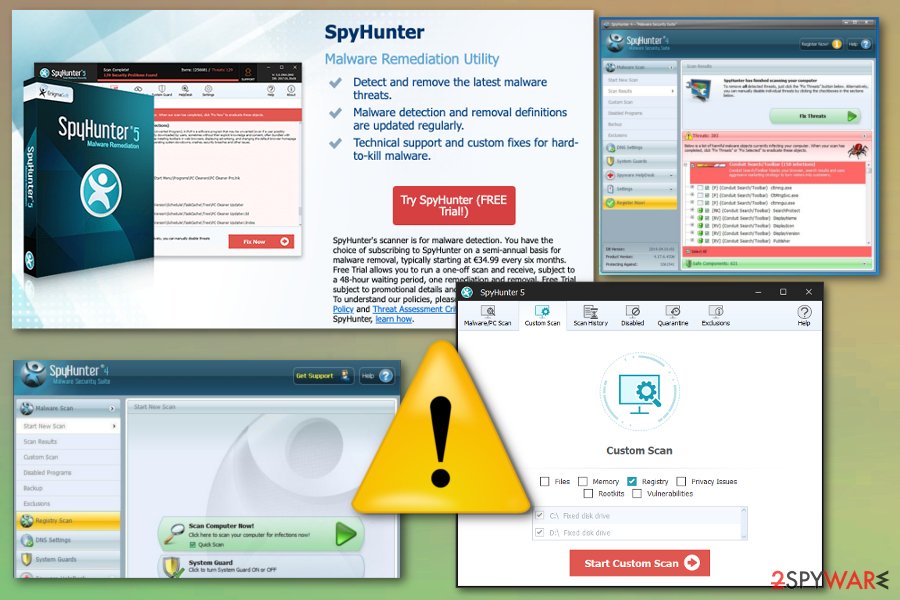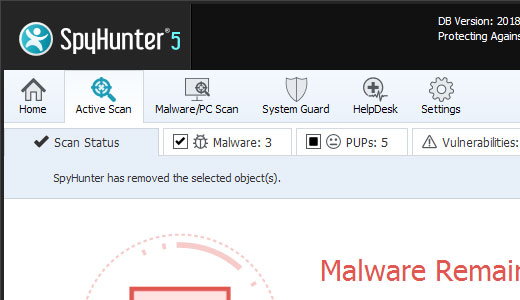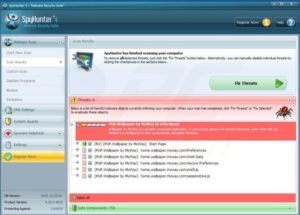
- #Spyhunter 5 types of scans software download
- #Spyhunter 5 types of scans install
- #Spyhunter 5 types of scans full
- #Spyhunter 5 types of scans software
#Spyhunter 5 types of scans full
Threat Summary: NameĪvast (Win32:Malware-gen), BitDefender (Gen:Variant.Ulise.32528), ESET-NOD32 (A Variant Of Win32/Injector.DSVO), Kaspersky (), Full list of detections on VirusTotalĬannot open files stored on your computer, previously functional files now have a different extension (for example, my.docx.locked).
#Spyhunter 5 types of scans software
Fake software updaters cause computer infections by exploiting outdated software flaws, bugs or by downloading and installing malware rather than the updates, fixes and so on.
#Spyhunter 5 types of scans install
Software 'cracking' tools allow users to bypass paid activation of software or operating systems, however, they often install malicious programs. When people open them, they install viruses. Cyber criminals use them to trick people into downloading and opening infected files that they present as harmless.
#Spyhunter 5 types of scans software download
Peer-to-peer (P2P) networks (torrent clients, eMule and so on), freeware or free file hosting websites, third party downloaders, unofficial websites and other dubious software download sources can be used to cause computer infections.

Trojans are malicious programs that, once installed, cause chain infections by proliferating other viruses. If opened, these infected files download and install viruses. These are usually Microsoft Office documents, PDFs, archives (ZIP, RAR), executables (.exe files) JavaScript and other files. To proliferate malicious programs using spam campaigns, they send emails that contain malicious attachments. It is unknown exactly how Spyhunter's rogue developers proliferate this virus, however, most cyber criminals use spam campaigns, Trojans, untrustworthy software download sources, software 'cracking' tools or unofficial/fake software updaters. In any case, we recommend that you create regular backups and store them on remote servers or unplugged storage devices. In most cases, victims cannot decrypt their files without the involvement of cyber criminals, unless the ransomware-type program is not fully developed, contains bugs/flaws, or (as is the case with Spyhunter) encrypts only file headers (in this case, try using file recovery applications such as EaseUS Data Recovery Wizard, Recuva, or similar). The only differences are usually cryptography algorithm used for encryption and cost of tool required for successful decryption. These malicious programs commonly encrypt data and allow developers to demand ransom payments. Some other examples are Raldug, Carcn, and George Carlin. There are many ransomware-type programs on the internet and the number is growing daily. Screenshot of a message encouraging users to pay a ransom to decrypt their compromised data: We recommend that you do not contact these cyber criminals, since, in return for a decryption tool, they will demand payment of a ransom.įurthermore, ransomware developers often provide no decryption tools even if their demands are met. Another way to recover files free of charge is to use a backup and restore everything from there. Therefore, it might be possible to recover files using file recovery software. Note, however, that Spyhunter encrypts only file headers. Most ransomware-type programs encrypt data using cryptography algorithms ( symmetric or asymmetric) that make decryption, without using a specific decryption tool or key, impossible. Note that SpyHunter anti-virus suite and Enigma developers have no association with this ransomware.Ĭyber criminals use SpyHunter's name to adversely affect its reputation - this is a case of defamation. As mentioned, SpyHunter is the name of a legitimate anti-spyware computer program, however, the ransomware developers disguise their malicious program as legitimate software. The email message should contain a unique ID (appointed to each victim). They encourage victims to contact them within 72 hours via the email address. They go on to mention that they specialize in creating and removing viruses. Spyhunter's ransom message states that all files are encrypted and can only be decrypted with the help of cyber criminals who developed this ransomware. This version was discovered by Karsten Hahn. It is possible that Spyhunter is a version of GarrantyDecrypt (another ransomware infection). It also creates the " $HOWDECRYPT$.txt" text file containing a ransom message. spyhunter" extension to each encrypted file.įor example, " 1.jpg" becomes " 1.jpg.spyhunter".


Developers (cyber criminals) use it to encrypt victims' data (by blocking access) unless a ransom is paid.

Spyhunter is the name of a legitimate anti-malware program, however, cyber criminals have recently started to exploit this name in their ransomware campaign.


 0 kommentar(er)
0 kommentar(er)
